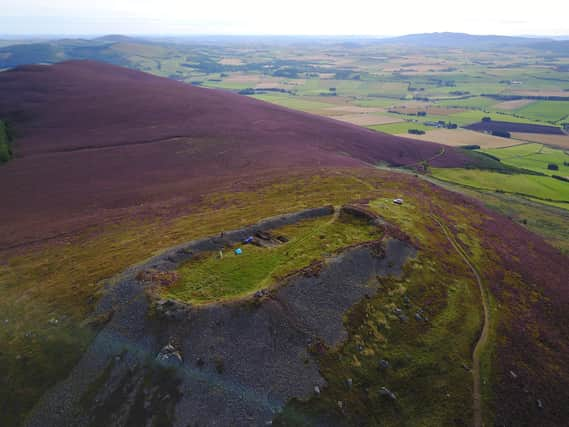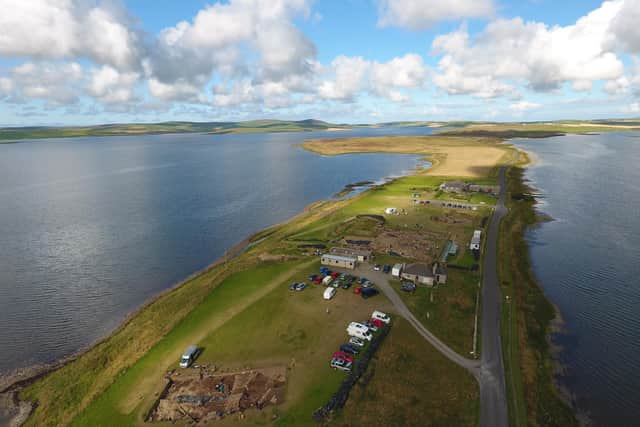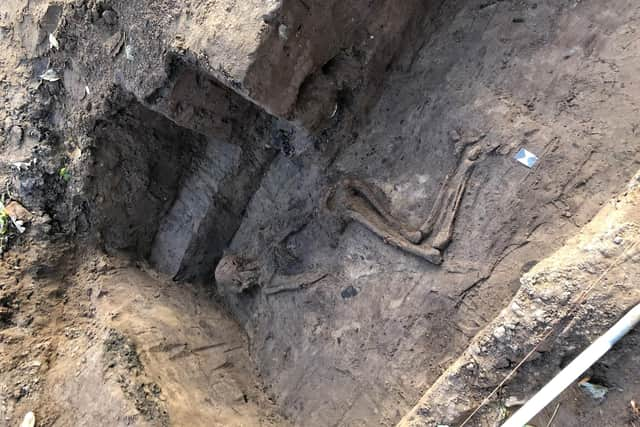Scotland's best archaeological discoveries of 2020


Dig It! – a centrepoint of information on archaeology Scotland – has put forward three key projects which have illuminated previously unknown parts of Scotland’s past. While the pandemic led to many excavations coming to a standstill, these studies were still able able to unearth exciting discoveries.
They are:
1. Scotland’s largest Pictish site


In May, one of the largest ancient settlements ever discovered in Scotland was identified with up to 4,000 people thought to have lived or gathered in hundreds of houses on the summit of Tap O’ Noth in Aberdeenshire during the Pictish era.
Advertisement
Hide AdAdvertisement
Hide AdThe hilltop is now known to have been a hive of activity around 1,700 to 1,400 years ago
The breakthrough was made this year when archaeologists at Aberdeen University’s Leverhulme Comparative Kingship Project radiocarbon dated samples of organic matter earlier taken from the summit.
These results were combined with drone surveys and laser technology which showed that there were hundreds of hut platforms within the fort – described as “potentially verging on urban in scale”.


2. Scotland’s oldest woven cloth
Evidence of a woven Neolithic cloth was found at the Ness of Brodgar in Orkney.
Organic material from prehistory does not often survive, but the breakthrough was made after the fabric left an impression in the wet clay of a pot that was made 5,000 years ago.
The impressions are thought to have been made by the potter’s clothing at the time.
The impressions were discovered by a volunteer as part of a University of the Highlands and Islands project. A technique called Reflectance Transformation Imaging (RTI), which combines multiple photos of a subject to create a highly detailed image that can reveal surface details not visible during normal examination, was used to make the discovery.
3. Stories from medieval Edinburgh
Fascinating stories from Leith were uncovered when archaeologists began unearthing skeletons and artefacts from a medieval cemetery to make way for the expansion of the Edinburgh Tram line to Newhaven.
Advertisement
Hide AdAdvertisement
Hide AdMore than 350 burials, which could date back to as far back as 1300, were discovered with the finds building on earlier results from a dig in 2008.
Meanwhile, a wealth of other artefacts were found at the South Leith Parish Cemetery, including a rare cannonball that may have been fired during the 1559-60 Siege of Leith. The bones from the fins of an adult sperm whale, which dated to around 1800, were also found in a nod to Leith’s industrial whaling past.
Dr Jeff Sanders, Project Manager at the Society of Antiquaries of Scotland’s Dig It! project, said: “Archaeology is all about discovering Scotland’s stories and these are just some of the new chapters that have been added despite the pandemic, with other finds ranging from a major Iron Age village in Aberdeenshire to a "lost" medieval bridge in the Scottish Borders.
"As Scotland’s Archaeology Strategy reminds us, archaeology is for everyone, so we hope you’ve been inspired to get involved in 2021 when it’s safe to do so.”